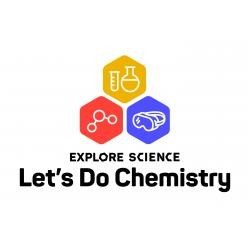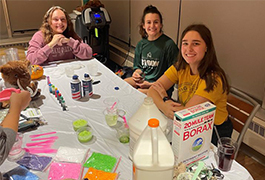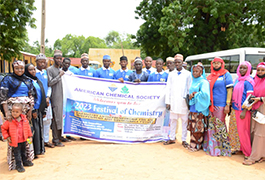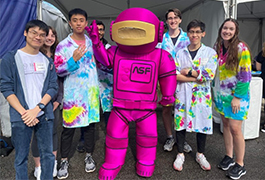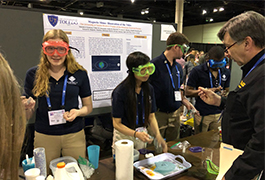Surefire Ways To Engage Kids in Learning Chemistry
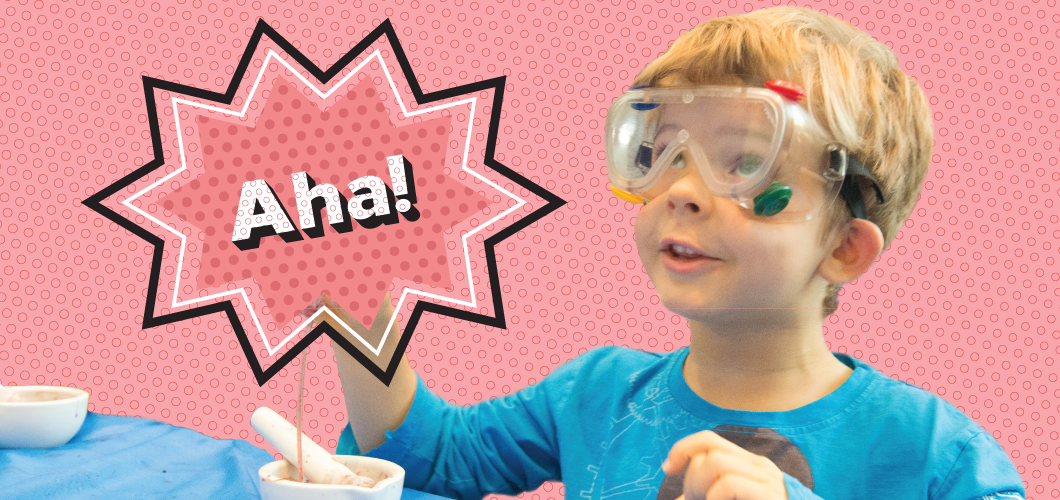
Whenever you share your love of science through outreach activities with children, tweens, and teens, they believe they are in the presence of greatness. To them, you are a celebrity. Whether you visit a classroom, invite students to your campus, or capture their minds at a science center, library, or other public venue, you are a unique voice with intriguing information about how chemistry works in our everyday world.
Of course, as a volunteer ambassador of chemistry, you’re not trying to be a celebrity; your goal is to get kids to learn and be just as excited about chemistry as you are.
So how can you design an outreach event that is both educational and exciting (and, of course, safe)? Read on to find out how to get those smiles, spark curiosity, and motivate kids to both learn and like chemistry.
Inspiration from education experts
The outreach you do in science centers, scouting programs, science festivals, and other events is called “informal education”, and it’s more significant than you may realize. The National Informal STEM Education Network (NISE Net) is one of several groups conducting research and developing practical resources in the field of informal science education (ISE). They boil down the goals of ISE to three key words: interest, relevance, and self-efficacy. When you organize outreach events, you want kids to be interested in science, to see that science is relevant in their lives, and to develop confidence in their ability to learn and do science (self-efficacy).
Last year, ACS partnered with NISE Net to develop Explore Science: Let’s Do Chemistry (www.acs.org/letsdochemistry), a series of chemistry activities that promote interest, relevance, and self-efficacy. Check it out to learn how to present tested activities, develop new ones, or identify what makes your favorite outreach activity so successful.
Framing the chemistry
If you are like me, you may have looked at the trio of interest, relevance, and self-efficacy, and asked, “Where’s the chemistry?” Of course, chemistry content is the first thing to consider when designing hands-on activities. When you organize outreach events, make sure you set them up so that kids have a positive and safe experience exploring a key chemistry concept or practice.
It is important for kids to see that you understand chemistry and can do neat things because you have this knowledge. Demonstrations that wow kids establish that you are a successful learner of chemistry, but they do little to increase your audience’s experience learning chemistry. Hands-on activities, where kids explore and make discoveries with your guidance, build their self-efficacy as learners of chemistry.
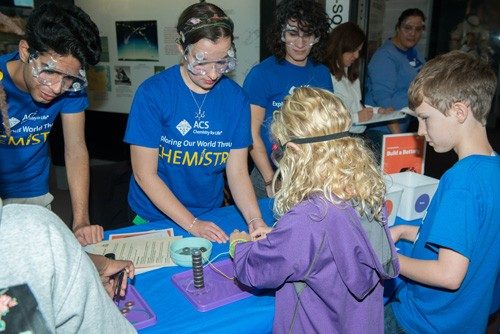
Speaking the language
You speak chemistry. When you answer exam questions and write lab reports, your words are a culmination of everything you have learned so far. However, while your point-earning explanation is correct, it falls short when talking with elementary and secondary school students. The best explanation for them should be a culmination of everything they have learned so far in science class.
How can you find out what kids know about chemistry? Before developing your program, consult acs.org/kidsandchemistry for general information on what’s covered in U.S. schools. Because each state, district, and school has its own guidelines, you should also talk to your local school district or, if possible, a teacher.
When you’re conducting the program, learn the kids’ vocabulary by simply talking to them. Ask questions that don’t have a right or wrong answer, listen to the words students use when they reply, and then adjust your explanation to incorporate their words and ideas.
Use their words to introduce new vocabulary. For example, you can say: “This is a word that high school (secondary) students use, but because you said _____, I know that you can handle it.” Everyone loves a compliment, which will help students remember. Listen again as kids try to connect this new information to what they already know. Riff off their ideas by sharing a similar experience, and listen some more. Remember that conversations involve both talking and listening.
Explore Science: Let’s Do Chemistry is a series of free chemistry activities that promote interest, relevance, and self-efficacy.
Facilitating learning
Good facilitation takes practice. Use the facilitation techniques below to invite participation, support exploration, and deepen understanding. Interestingly, the NISE Net researchers discovered that the following steps occur several times during each successful interaction. Expect to spend most of the time supporting exploration, but know that you will need to restart and delve deeper in small bits throughout your interaction.
- Greet participants
- Model good chemistry practices
- Engage the whole group
- Have fun!
- Let participants do the activity
- Be flexible and attentive
- Ask guiding questions
- Listen and respond to students
- Use simple, clear language
- Offer positive feedback
- Be encouraging
- Ask open-ended questions
- Make connections to everyday life
- Share what you know
- Acknowledge what you don’t know
- Summarize key points to remember
You are in a unique position to have a lasting and profound influence on young minds. Students are flattered by your time and attention, and they are very interested in what you have to say. Guided hands-on activities, along with immediate positive reinforcement, allow them to make their own realizations and view themselves as capable of learning chemistry.
Using techniques from the field of ISE will allow you to influence opinions and understandings about chemistry. You can help kids experience success in learning something they once viewed as difficult or perhaps never considered before. Through your outreach efforts, you will make a lasting positive change in the lives of the kids you meet.
Know Your Audience
Use the following general characteristics to plan your activities and your approach. Individuals vary greatly, so be prepared to adapt as needed.
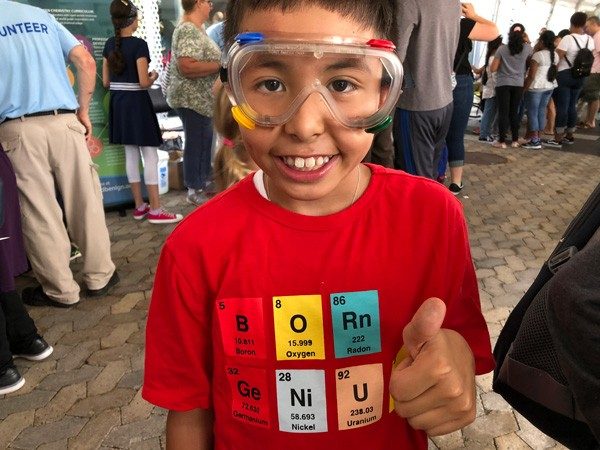
Ages 5–7
Respond enthusiastically—Enjoy their energy, and stay calm to avoid escalating behaviors.
Openly curious—Capitalize on their curiosity. Ask questions that the demo or hands-on activity will answer. Expect to answer questions about science and your career. This may be the first time they have ever met a scientist!
Want your approval —Catch kids being good. If you point out students who are ready for chemistry because they are wearing goggles, other kids will suddenly rush to do that, too. Make eye contact, smile, and notice specifically what they are doing well (“I can tell that you used the dropper the way I showed you” or “Thank you for waiting patiently for everyone to be ready”). If you need to redirect their ideas, recognize their thinking and tell them what is correct (“I understand why you might think that but what actually happens is different”).
May or may not read yet—Provide strong visual cues with written words in context. Give instructions orally, and model what you want kids to do.
Ages 8–10
Easy to motivate—They are very willing to participate and love to help.
Curious—Provide an everyday experience, and then ask a question about it, and they will be curious right along with you.
Seek the approval of adults and peers—Calling individual kids out for being good is not effective as it is with younger children, but they do want to shine. “I noticed that some students are very good at releasing just one drop at a time with the dropper, rather than squirts. Those of you who did this well, what are some strategies that you can suggest to others?”
Read and write with purpose—Kids at this age have some basic skills in place, so they can self-direct. Provide either written or oral instructions, but have kids paraphrase instructions rather than just reading them aloud. If you want them to write, provide plenty of room and time.
Ages 11–13
Engage best in small groups—At an event with stations, you will notice kids at this age travel alone or in single-gender groups.
Less likely to show that they like something—Tweens and teens tend to internalize their enthusiasm. Know that you are making an impact, even though you likely won’t receive an enthusiastic response. Signs that they like something will come later when they talk with friends about the experience.
Seek approval more from peers than adults—They want your approval but might not respond because they are concerned about what others might think about them. Recognizing good ideas and behaviors is still important; it’s just better done individually or in small groups.
Expanding their vocabulary—They are adding words and concepts to their repertoire constantly. However, they often use words before they fully understand what they mean. It’s easy to misinterpret word usage for understanding. Ask them guiding questions to get them to explain their thinking, and then add to that as appropriate. This will help them develop better understanding and help you gauge what they know and how to talk with them.
Ages 14–17
Settled and eager to hear what you have to say—High schoolers have more self-control, and much of the redirecting needed when the students were younger is unnecessary. Enjoy their attentiveness!
Require immediate relevance—With information so easily accessible (and so much they are required to know for school), teens tend to tune out what they don’t need to know. Provide explanations that apply to their immediate lives. Better yet, ask them to think of possible connections to consumer products or their own experiences. It’s much better if they find the relevance to their lives, so avoid telling them outright.
Finding their identities—High school students are testing out who they are and who they want to be. They also have a strong desire to be accepted by their peers and by adults. Nonchalantly accept them as they are and move on to what you want to talk about.
Considering their own careers—Teens are starting to make choices that will determine their careers. Share your experiences with chemistry and possible careers (if you have any ideas). It’s important to have a scientifically literate population, so your time and insight are valuable to all students.

